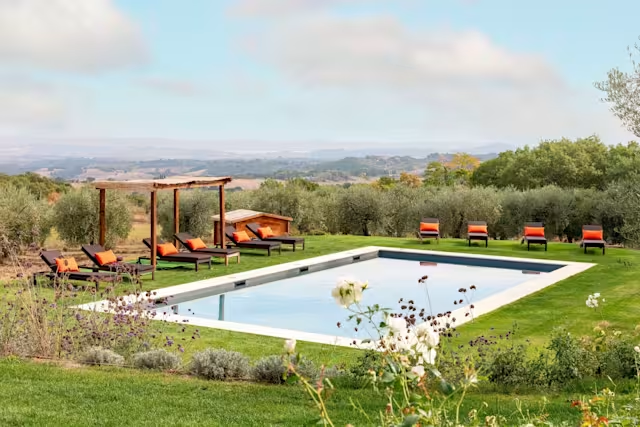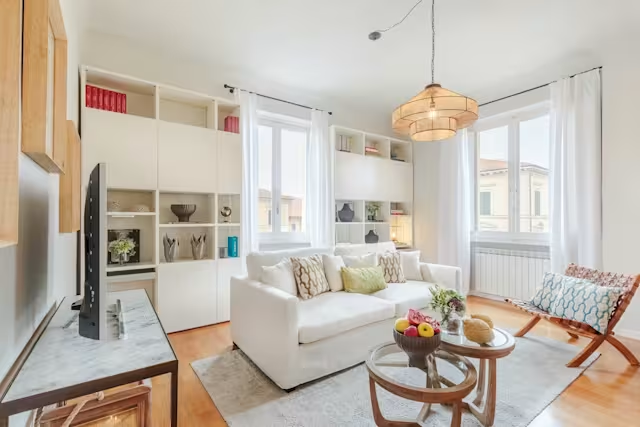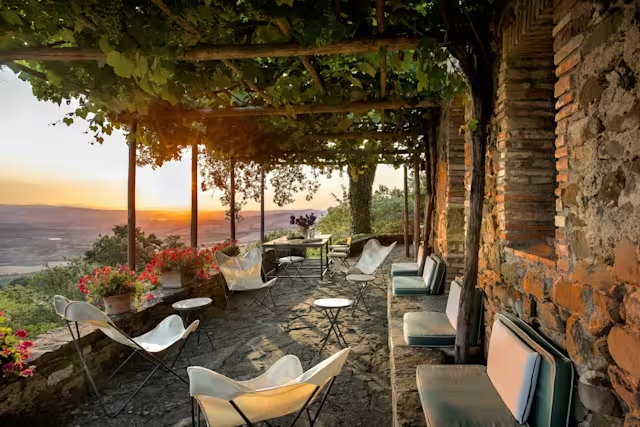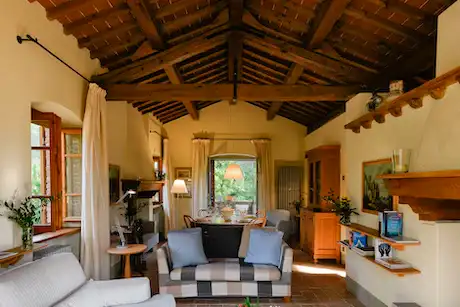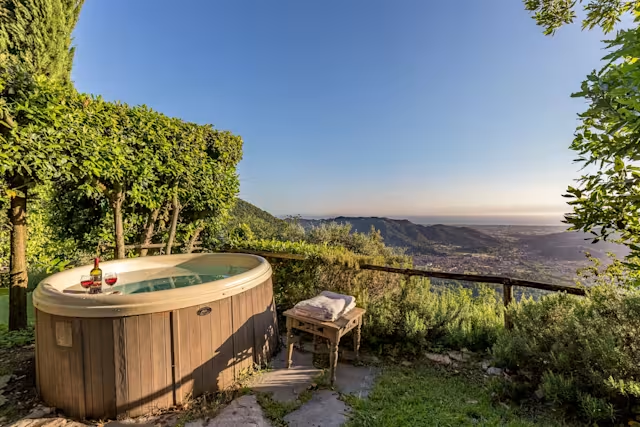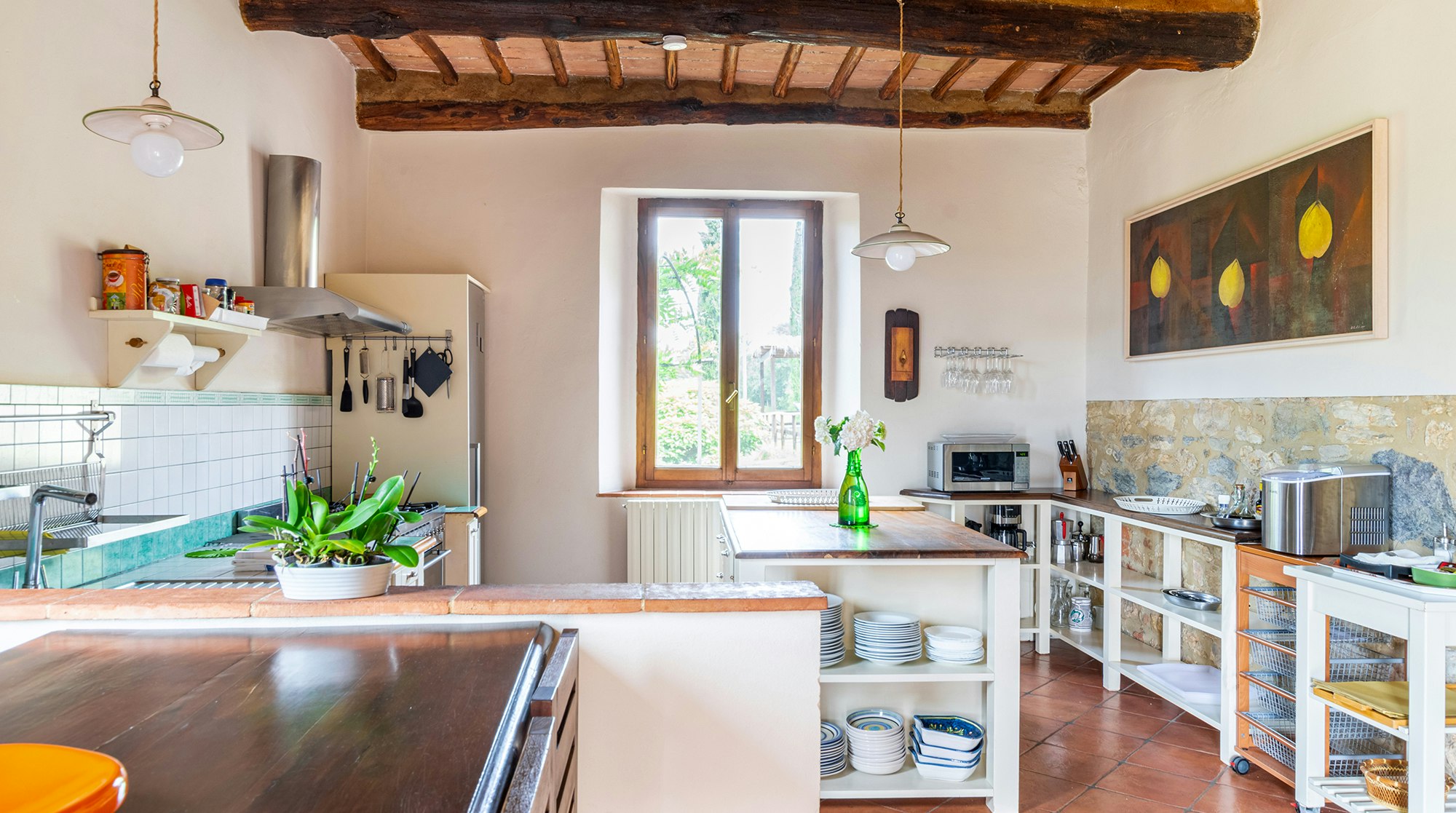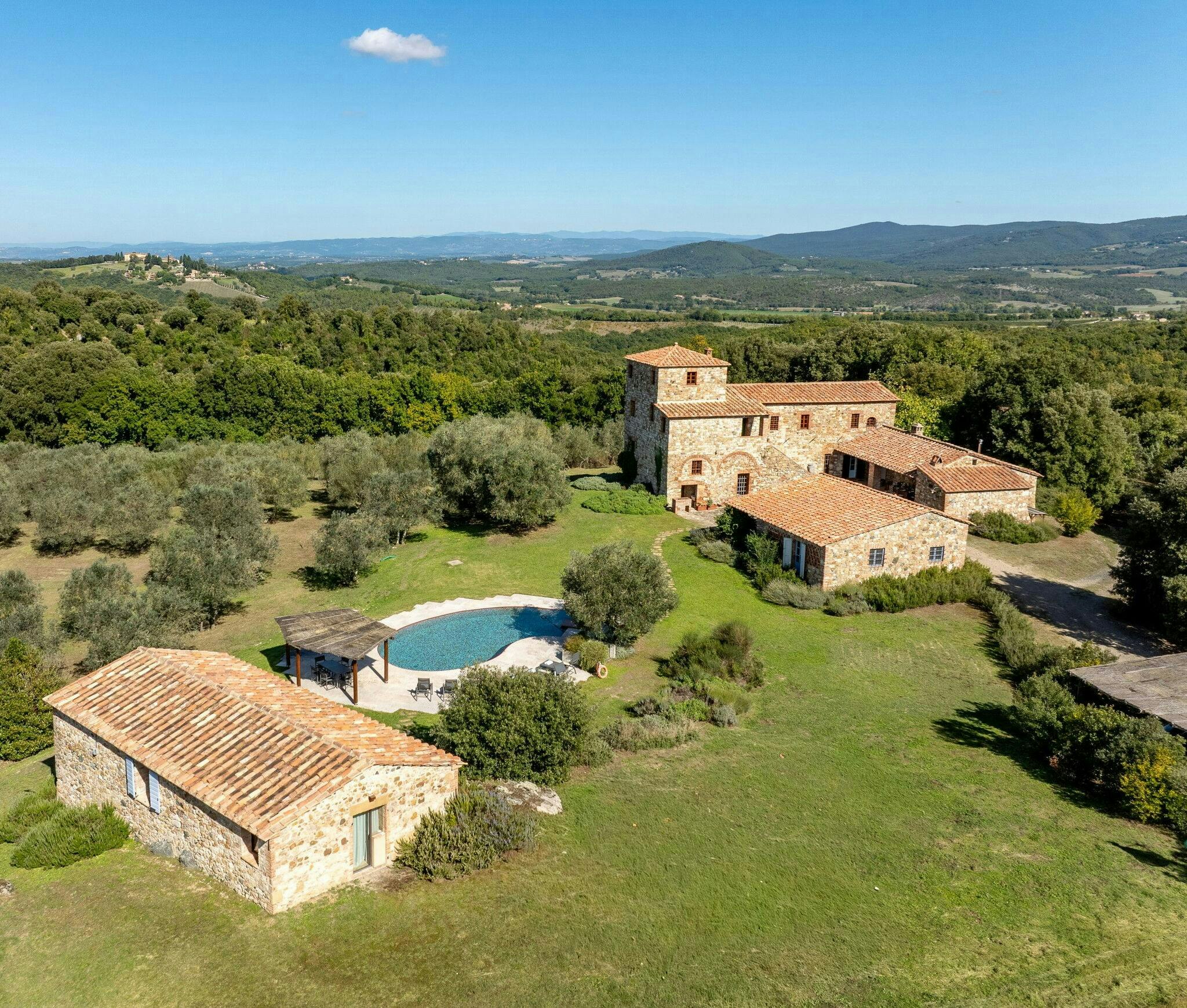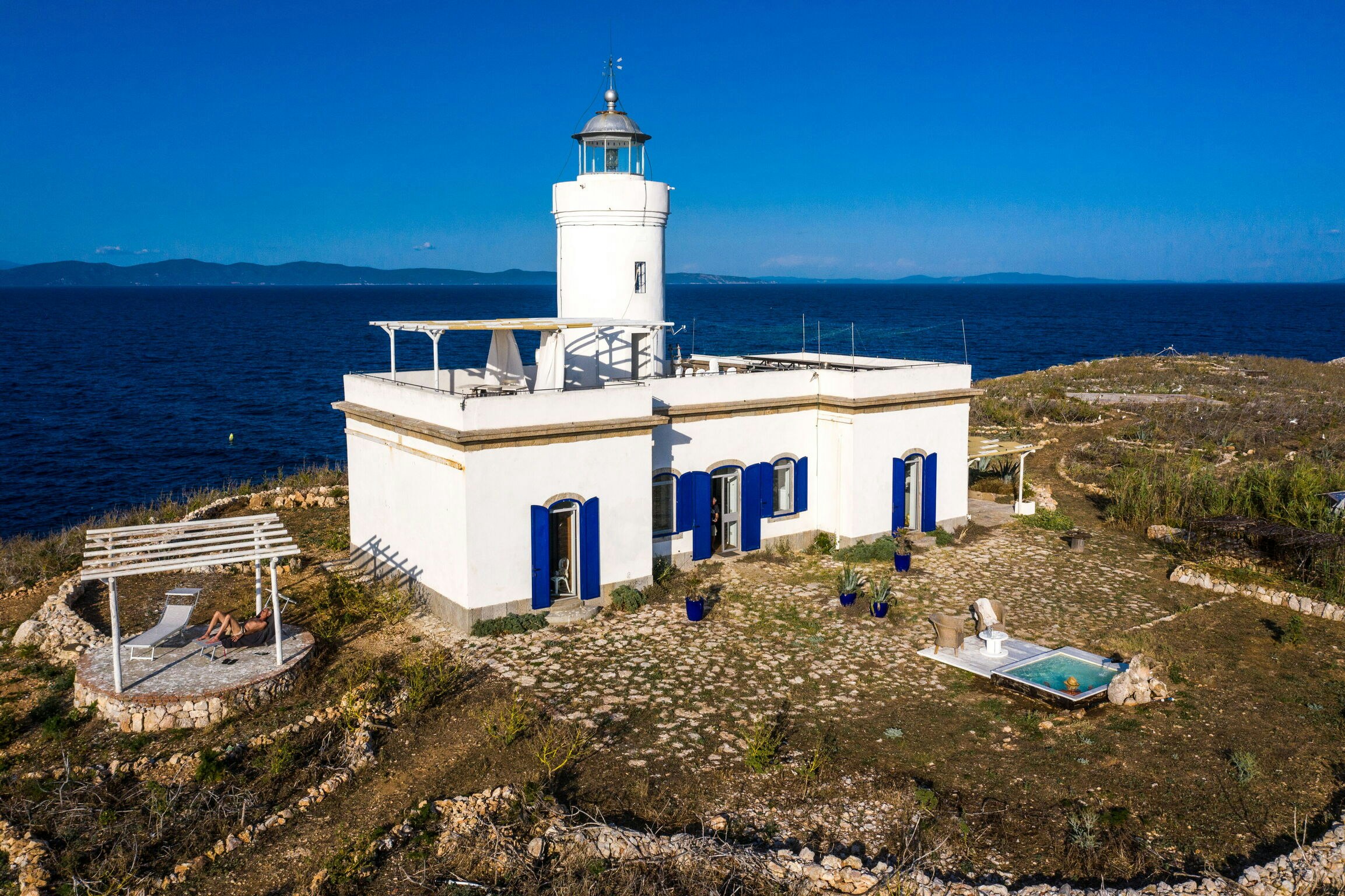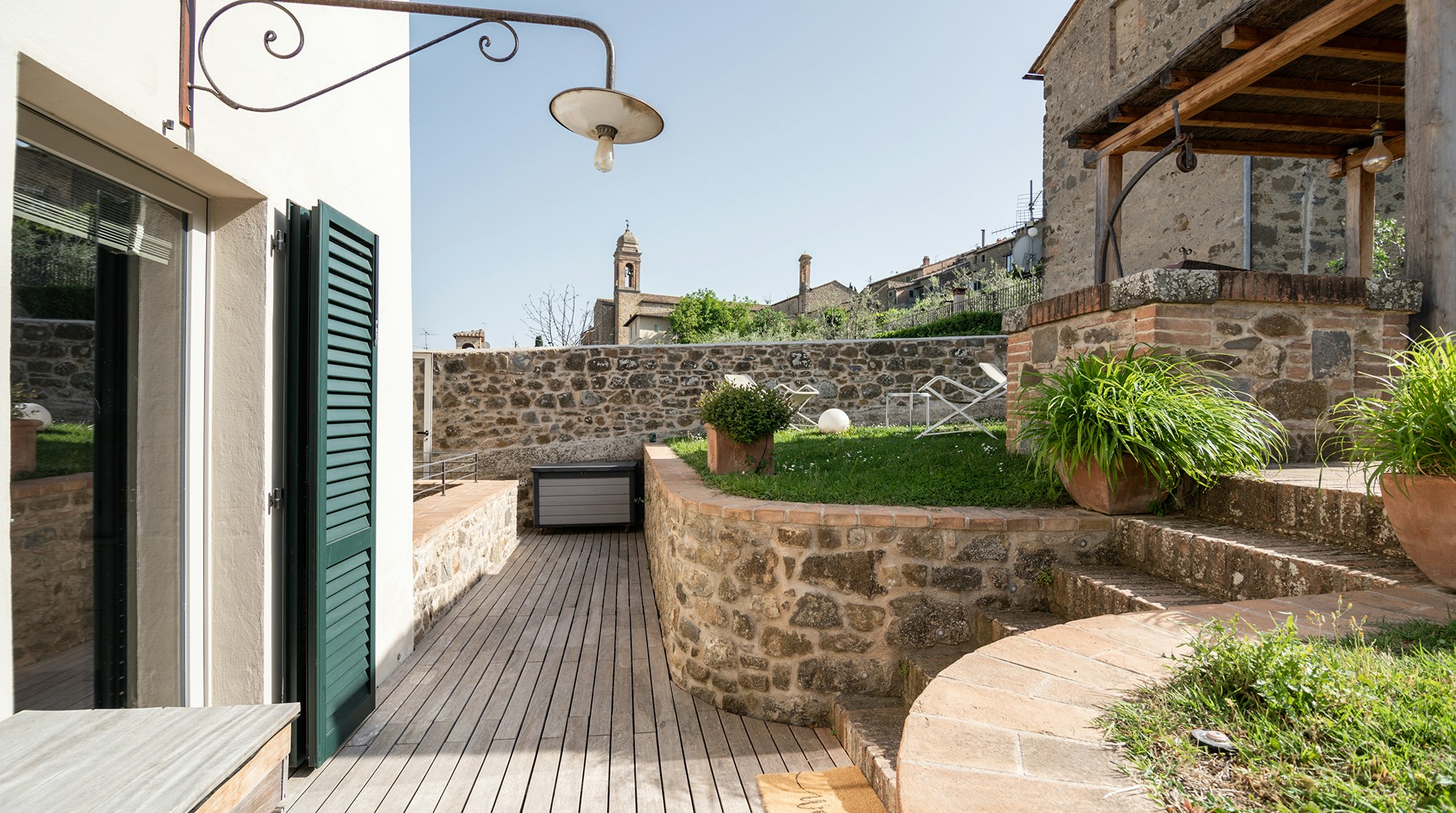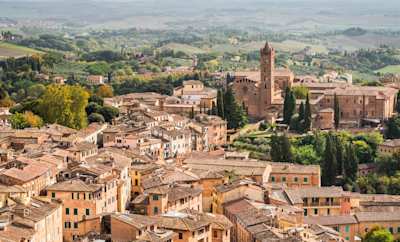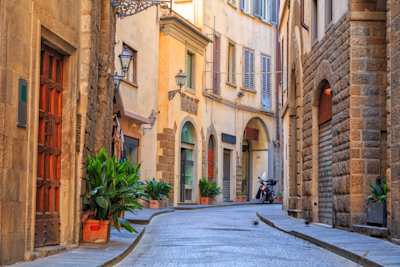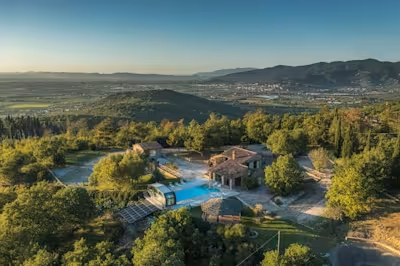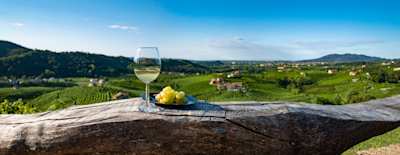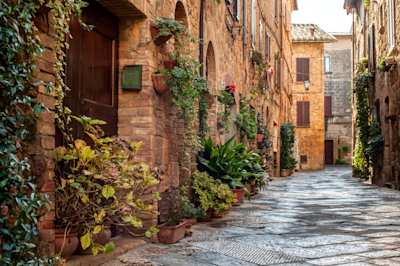The Ultimate Tuscany Itinerary For Four Days
From sipping wine to getting lost in Renaissance art, Tuscany is one of Italy’s most captivating regions
~
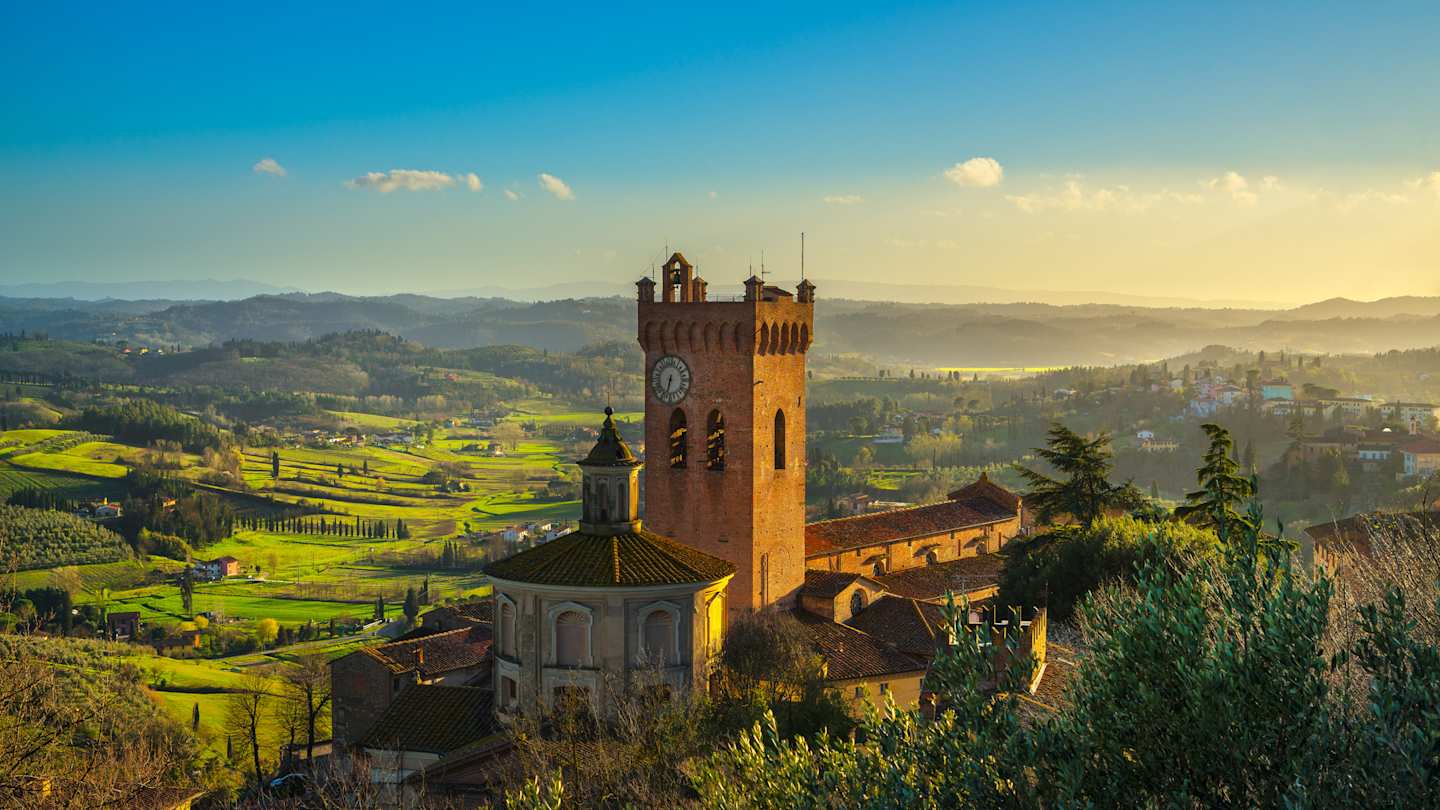
Tuscany is a bucket-list destination for many people, and it’s easy to see why. With some of the most photogenic landscapes in the world, a visit here is to experience la dolce vita—the sweet life. You may not think you can see the best of Tuscany in four days, but fear not—the experts here at Plum Guide are magicians when it comes to planning trips. We’ve put together Tuscany’s highlights: beautiful cities, historical towns and villages, sparkling coastline and dreamy countryside. Ready to fall in love with one of Italy’s most beloved regions? Take a look at our Tuscany itinerary for four days.
Day One: Take a whistle-stop tour of Florence
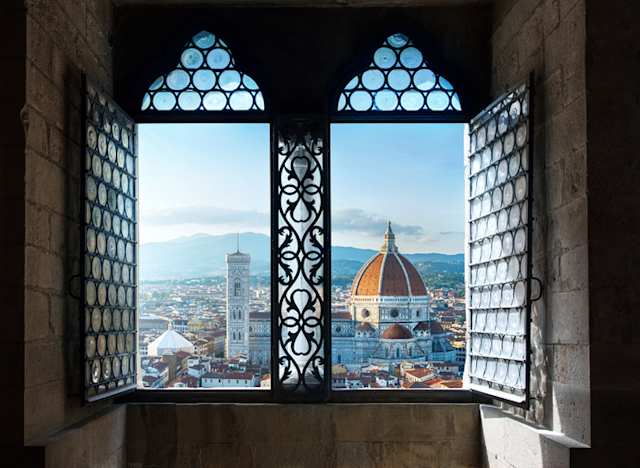
View from the old window on Florence Duomo Basilica di Santa Maria del Fiore. Florence, Italy
You could spend a whole week in Tuscany’s wonderful capital, but at a push, one day in Florence is enough to see its highlights. To save yourself time on the day, we recommend booking tickets for museums and attractions in advance.
To beat the crowds, wake up early and head to the Piazza del Duomo, the central square at the historic heart of Florence. This is where you’ll find Santa Maria del Fiore, the city’s majestic cathedral. Originally built by Arnolfo di Cambio in 1296 and crowned in 1436 by Filippo Brunelleschi’s masterpiece ‘The Dome’, climb up the 463 steps to the very top for far-reaching views over the city. The cathedral’s interior is equally as stunning, with stained glass, soaring Gothic arches and decorative frescoes.
For more frescoes and brilliant architecture, make your way to Basilica di Santa Croce, which is also the final resting place of Galileo, Michelangelo, Rossini and Machiavelli. From here, pop into the Uffizi Galleries to see ancient sculptures and paintings from the Middle Ages to the Modern period. Some of its most famous Renaissance masterpieces are Michelangelo’s Doni Tondo and Botticelli’s Birth of Venus and Primavera.
After a traditional Florentine lunch (Trattoria Palle D'Oro dal 1860 is a good choice), carry on to the Accademia Gallery for a photo of Michelangelo’s David, or to the Palazzo Vecchio’s Torre di Arnolfo for views that wouldn’t go amiss on a gift shop postcard. If you want to stock up on souvenirs, head to the streets of Via Roma and Via dei Calzaiuoli for luxury goods or to Mercato Centrale for local products like olive oil and cheese. There’s even a food court upstairs if you feel like a second lunch. The surrounding streets are home to the San Lorenzo Market, where you can hunt for pottery and leather goods. For artisan workshops, cross over the River Arno to the Oltrarno district—this is also where you’ll find Piazzale Michelangelo, one of the best places in the city to watch the sunset.
Day Two: Admire architecture in Lucca & Pisa
Lucca
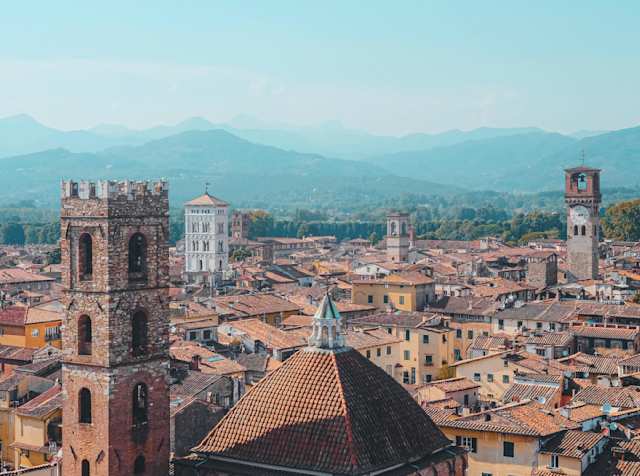
Lucca, Italy
On the second day of your Tuscany jaunt, combine a visit to the cities of Lucca and Pisa. Start in Lucca, its well-preserved Renaissance walls surrounding the city. Walk or cycle around the walls—it takes an hour to walk the whole way around, but if you’re pressed for time you can cut it short and enter the city via the nearest gate. Stroll down the medieval Via Fillungo, the city’s pedestrian high street. Peer into the charming shop fronts, admire the ornate palaces and marvel at the old churches.
Make your way to the buzzing Piazza dell’Anfiteatro for a drink and a bite to eat—Ristorante Trattoria L’ Angolo Tondo comes highly rated. Once you’re fueled up, get ready for some epic views with a climb up the 50-metre Torre delle Ore (the highest in the city) or the tree-topped Guinigi Tower (or both if you need to burn off the pasta).
Pisa

Leaning Tower of Pisa and Cathedral at sunset, Tuscany, Italy
Back at ground level, take a 25-minute drive to Pisa. Home to one of Italy’s most iconic views, no visit to Tuscany would be complete without a cheesy tourist shot. If you didn’t climb the towers in Lucca (or if you don’t mind another workout), you can also climb the 294 steps to the tower’s tilting top. We know what you’re thinking—it’s perfectly safe, don’t worry. The tower is located in the Campo dei Miracoli, or Field of Miracles. This is where you’ll come across some of Italy’s most exquisite architecture, including Romanesque, Gothic and Early Renaissance buildings like the Pisa Duomo, Baptistery, the Monumental Cemetery, the Duomo Museum and the Museum of Sinopie.
For the rest of the afternoon, take it easy with a walk along the River Arno. The section that runs through the city provides a scenic landscape, complete with five bridges and colourful buildings lining the river. One of the most romantic ones is the Mezzo Bridge which offers photogenic views of the River Arno.
Day Three: Play at the seaside in Viareggio
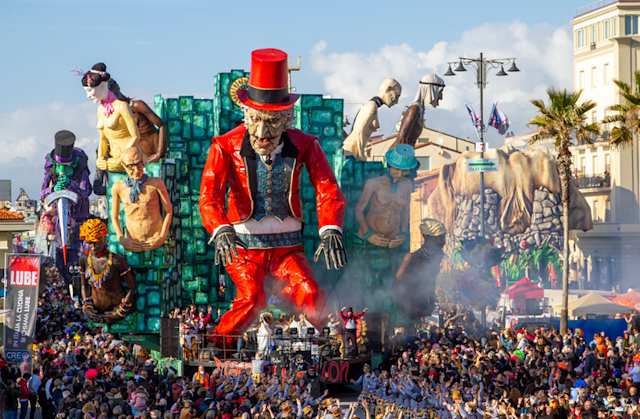
Crowds watching the floats pass at the Viareggio Carnival, Tuscany
With its hinterland as its main attraction, not many people realise that Tuscany is home to around 230 kilometres of sparkling coastline. Any trip to Tuscany should include a trip to the seaside, so on the third day of your Tuscany itinerary for four days, grab your sunhat and head to the beach.
Sandwiched between the Tyrrhenian Sea and the Apuan Alps, Viareggio is one of Italy’s most famous seaside resorts. You’re spoilt for choice when it comes to beaches, as the entire seafront is made up of long stretches of sand. From family-friendly areas to water sports locations, Viareggio ticks all the boxes in a beach destination. But the city doesn’t just attract beach bums—it’s also an attractive destination for lovers of the figurative arts. Stroll along the Margherita Walk for some of the best examples of Liberty and Art Deco architecture dating back to the early 20th century. Also worth a visit is the magnificent Villa Argentina, an Art Nouveau jewel considered to be the most exquisite culmination of modernist style in the area.
If you happen to be visiting in the spring, you’ll be treated to a month-long celebration of the Viareggio Carnival, one of the most famous carnivals in Italy. The streets come alive with costumed dancers, spectacular floats, marching bands, confetti and streamers, transforming the city into a kaleidoscope of colours. Joining in the festivities is mandatory—face paints, masks and wigs can be found for sale in the area. If you’re not in Viareggio during the spring, you can still visit the Carnivale Museum to brush up on the history of the carnival and, if you’re lucky, see some of the floats being made.
Day Four: Sample the vino in Chianti
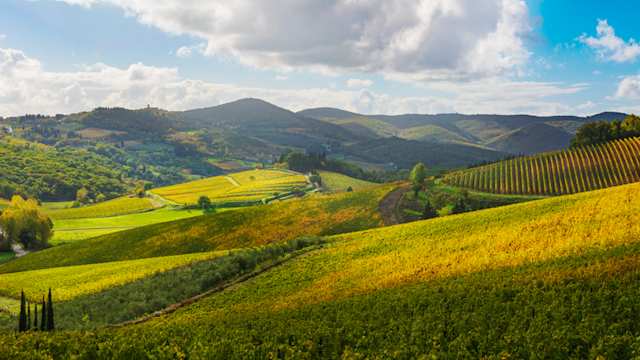
Radda in Chianti landscape with vineyards in autumn, Tuscany region, near Florence
What would a Tuscany itinerary for four days be without a little sip of wine? Chianti is one of its most renowned wine regions, an area spread between Florence and Siena. To the east lies the Chianti Mountains, and to the west, you’ll find the Val di Pesa (Pesa Valley) and Elsa River.
The dry, red wine is mostly produced from Sangiovese grapes and was once regarded as merely a cheap table wine. While there’s still plenty of good quality, inexpensive Chianti available, the late 20th century saw winemakers elevate Chianti to a higher level of quality. Today, Chianti is available at all price points, from a few euros to several hundreds of euros per bottle.
It’s worth renting a car (and a driver if you want to go for a few tastings) and taking a drive through the picturesque countryside, where vineyard-covered hills and olive groves stretch into the horizon. On your journey, you’ll come across wineries signposted along the roads. Many of them are set within stately castles, making for a rather unique experience—when else can you say you’ve sipped wine in a medieval castle? We can highly recommend Castello Di Brolio, Castello Sonnino and Castello di Querceto.
There are many small towns dotted around the region which are also worth a visit—Greve in Chianti has a Wine Museum and nearby 16th century Castello di Querceto winery, Radda in Chianti for an authentic medieval feel and many wine bars, and Castellina in Chianti with its impressive fortress and artisans, eateries and wine cellars.
If you have time, swing by the impressive walled town of Monteriggioni. Perched on a hill, the town was once a medieval castle with mighty towers visible for miles. Its cobbled streets haven’t changed much to this day—step back in time as you stroll along the fortified walls for far-reaching views. Known for its red and white wines, wine tours are available in the vineyards and cellars in the town and surrounding area (if you’re not already wined out for the day).
